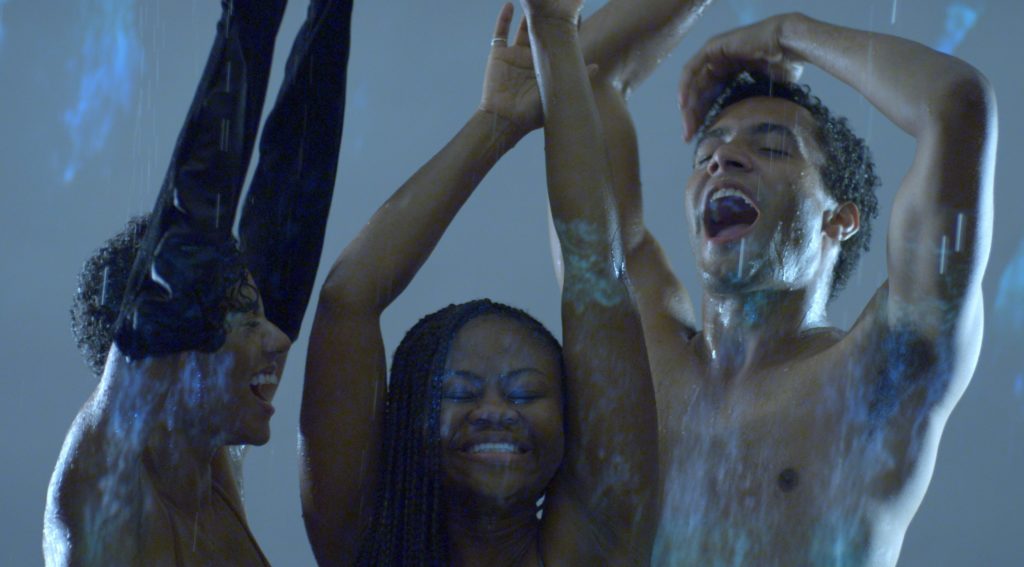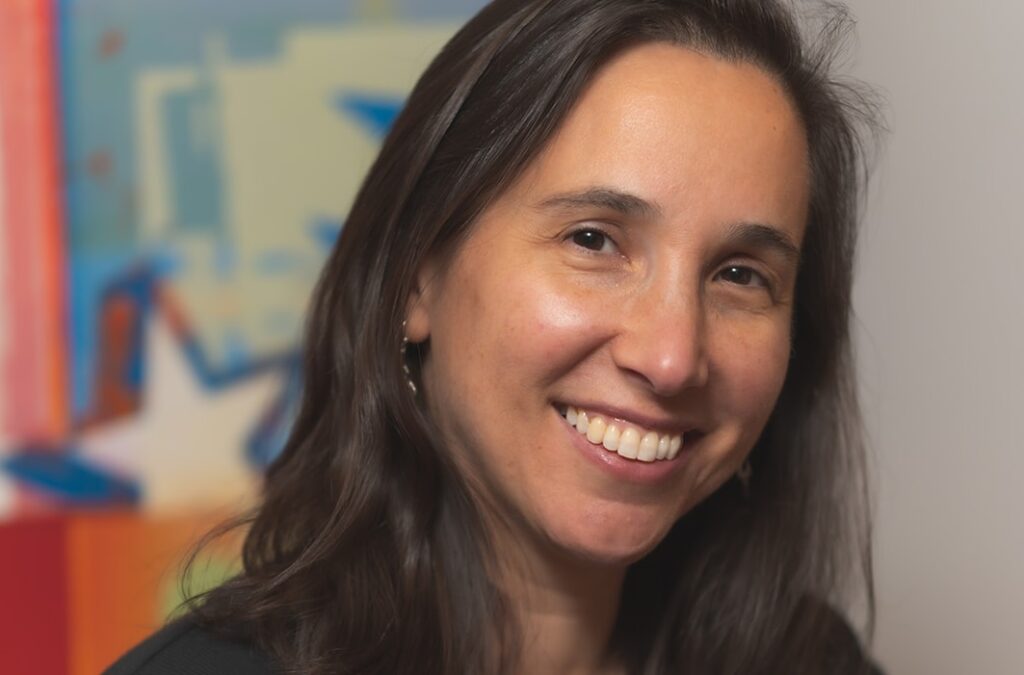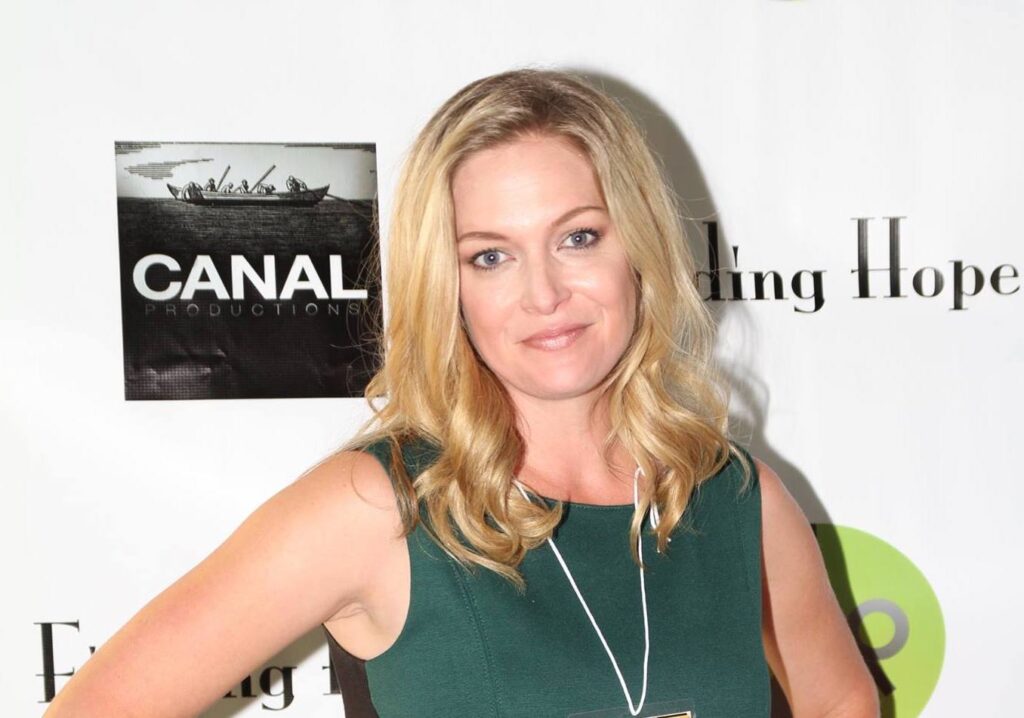Guest Post by Tchaiko Omawale
Being a Black female filmmaker, I carry the privilege and responsibility of creating the things I wish I had seen when I was growing up. My two favorite movie genres — fantasy and coming-of-age — never had people that looked like me. And so, the dream was born to make those types of films explicitly drawn from my imagination; to make films that had people of color in them at the center. I wasn’t ready to take on raising a fantasy film budget for my first feature, so I chose to make a smaller, more personal one.
My feature,”Solace,” is inspired by my journey with an eating disorder and self-harm, which stemmed from the challenges I faced growing up internationally as a Black kid. By the age of 16, I had lived in eight different countries around the world. Growing up, I felt as if I was from everywhere yet nowhere all at once. I found comfort in films that explored faraway worlds, teenage angst, and rebellion. Films like “Labyrinth,” “Neverending Story,” “Pretty in Pink,” “Breakfast Club,” “Sixteen Candles,” and “Fast Times at Ridgemont High” were inadvertent contradictions for me: they allowed me to escape from my uncomfortable reality, yet left me feeling isolated because of their prominently white cast. Nobody looked like me, and the few depictions of Blackness were problematic. As MauludSADIQ wrote, “There were no ‘good’ Black characters. There were scary ones, like Forest Whitaker’s character in ‘Fast Times at Ridgemont High.'”
As I look back, I realize I had to twist and fold myself — essentially erasing my Blackness — to enjoy my favorite movies. Ultimately, this not only damaged my self-esteem, but also illustrated how racism played a role in my eating disorder and self-harm issues. I have come to understand what people mean when they say erasure is a violent act. Having only racist portrayals of Blackness and no healthy images as a Black teenage girl, I ate to suppress the pain and carried on pretending everything was great. Later on, I engaged in self-harming behaviors because I didn’t know how to feel the pain when it continued to bubble up inside.
With “Solace,” I am telling a story missing from the current landscape of cinema: Black teenagers dealing with disordered eating and self-harm. The film is about a 17 year-old orphan who is shipped off from New York to live with her estranged grandmother in Los Angeles. After struggling to navigate between her grandmother’s overbearing ways while living with a hidden eating disorder, she plots an escape with her rebellious teenage neighbors, one of whom she learns has a dark secret too: cutting.
Despite being widely considered a white girl’s disease, eating disorders are something that acutely affects Black folks; this significant misrepresentation can be accredited to many of us feeling alone in the experience. Black teenagers are 50 percent more likely than white teenagers to exhibit bulimic behavior, such as binging and purging.
While making “Solace,” my friend and cinematographer, Bruce Francis Cole, was an amazing creative partner. We were equally excited by the idea of making a micro-budget film. Bruce and I knew we could make something beautiful and honest. The challenge of creating meaningful cinema with budgetary restrictions only further thrilled and inspired us. So naturally, we fitted the language of our film to match the budget.
We were uninterested in traditional coverage and agreed to trust the DIY spirit, ourselves, and our performers’ commitment to the process. Actors improved, we stole locations, we intentionally used a hand-held camera to give a shaky “punk” aesthetic. While editing, we even cut in a non-linear way. For example, in the scene where we see and hear the lead character’s father has died, we made the creative choice to intercut to her future response. In prep, I spoke to Bruce about addiction and how it mirrors the experience of adolescence: it’s a mixture of magic, rebellion and disjointedness, and destruction. These overarching themes of what it means to be young would become our foundation. We read through the script together and attributed a word to each scene that embodied its emotional purpose — words such as “suffocation” and “molasses” were used in some of the bingeing scenes.
This emotional context became part of our shooting roadmap. Mood boards for lighting, texture, framing, and the “eating disorder arc,” the progression of the character’s relationship with food, were also heavily utilized. Loosely speaking, food starts as her friend; it’s a way for her to escape the pain. Eventually, as the food slowly stops alleviating her, it becomes an enemy as her life spirals out of control, until she hits rock bottom.
In post-production, I continued to work with editors Jasmin Way and Colin Rich to draw inspiration from the themes of adolescence and addiction. We utilized picture and sound editing techniques to immerse the audience in the disjointed and disembodied experience of the characters. During sound design with Nathan Ruyle, we created a sound architecture for every time a role was triggered. We used several layers of sound effects including sounds of whales, sounds of food digesting in the intestine, and sometimes sounds of airplanes, which added a drone-like quality.
I found my needle drop tracks from various YouTube Afro-Beats dance videos, the majority of which feature independent artists like “Quadrinho 3″ by Puto Cossa from Angola. These tracks perfectly complement Meshell Ndegeocello’s score, giving the film a youthful Diasporic soundscape. Ndegeocello’s music at its core is an embodiment of her spirit and soul as an African-American woman, while also acknowledging the needle drop tracks made by young musicians from various African nations who too are influenced by African-American music.
“Solace’s” premiere at Los Angeles Film Festival was something straight out of my dreams: a packed theater, with a majority Black audience. It was indescribable to finally hear the reactions to the jokes, the emotionally intense scenes, and everything else in between. However, the most surreal moment occurred immediately following the film’s ending: a standing ovation from the audience.
After the film screened, several people approached me to thank me for showing their experiences on-screen, as they had never seen themselves represented before. It was so validating to hear older people say I brought them back to the turbulent times of adolescence. That night through the next morning, I received DMs with people compelled to share that they too had struggled with food and disordered eating and cutting.
It has been the experience of a lifetime to have worked so hard to raise money for this film over the last four years, and now finally being able to share it with the world.
“Solace” made its world premiere at LAFF on September 23.
Omawale has interned for Spike Lee and Mira Nair. While assisting directors George C. Wolfe and Tom Vaughan, she directed several short form projects. She was awarded the Gaea Sea Change Residency for artists working for social change. “Solace” was part of the Sundance Writers Lab, Panavision New Filmmakers Program, Tribeca All Access, the IFP Narrative Lab, the Creative Visions Creative Activist Program, and Big Vision Empty Wallet diversity program. It is a Women In Film grantee and a Film Independent Efilm/Company 3 grant winner. Check out Omawale’s website to see more of her work.







